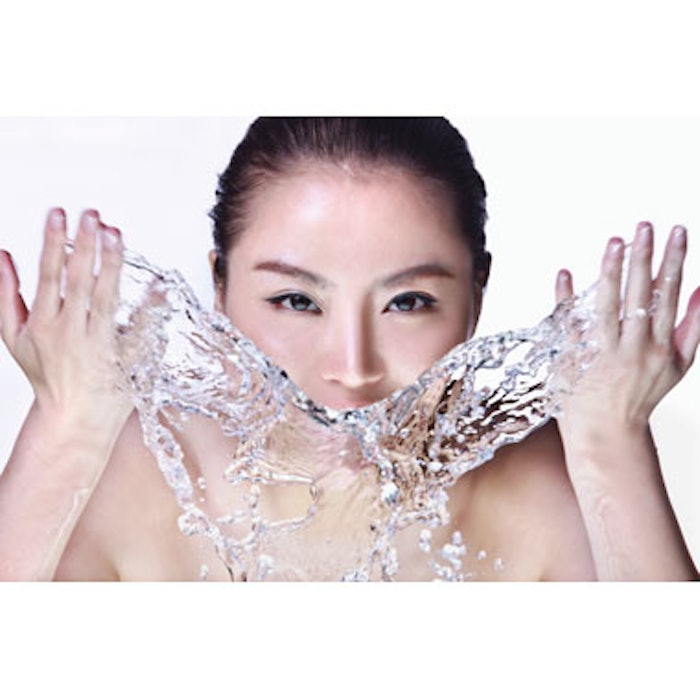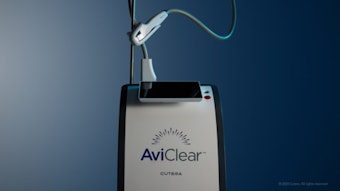
Creams and serums receive a lot of attention from skincare professionals and aesthetic patients, but cleansers are at the core of a homecare regimen. Helping your patients find the right cleansers for their skin types and concerns can lead to faster improvements and better long-term skin health. To understand the different cleansing products available today, it helps to go back and revisit the evolution of soaps and facial cleansing ingredients.
The first accounts of using soap-like materials for cleansing date back to 2500 BCE, although soap similar to what we use today (made of oil, water and lye) was invented between 600 and 300 BCE. The actual steps necessary to produce soap were first published in 1775, and the first manufactured soap—sold in individually wrapped and branded bars—appeared in England in 1884. Driven by consumers’ desire for cleanliness and freshness, the soap industry rapidly expanded, and many of the original soap manufacturers—including Colgate Palmolive, Procter & Gamble and Unilever—are still around today.
The increase in soap use at the turn of the century led to new concerns such as dry skin, itching and irritation, and mild cleansing bars formulated with synthetic detergents debuted in 1948. These gentler versions have since re-placed their predecessors and evolved to provide myriad benefits for the skin, ranging from moisturization to sanitation in solid, liquid, gel, cream, foam and cloth forms.
The goal of cleansing is to remove dirt, oil, dead surface cells and bacteria from the skin, and cleaning products rely on surfactants to do this. Surfactants reduce the surface tension on the skin and emulsify dirt. They are often combined with: emollients, occlusives and/or humectants to hydrate the skin; ingredients with drug-like effects to address concerns such as acne; and perfumes for an enhanced sensory experience. The combination of ingredients, the form of the cleanser (i.e., bar or liquid) and the type of surfactant dictate the effect the cleanser has on the stratum corneum.
Types of Surfactants
Anionic (negatively charged) surfactants have the most cleansing power and generate the most “suds” or foam. True soap and sodium lauryl sulfate fall into this category. These cleansing agents have a strong irritating effect on the skin because they cause swelling of the cell membranes and strip lipids from the skin.
Cationic (positively charged) surfactants have lower detergent properties than anionic surfactants, yet are irritating to the skin as well. These ingredients are typically used for their antimicrobial properties, and they can cause dermatitis in those who wash their hands frequently. A few examples of cationic surfactants are cetrimide, chlorhexidine and benzalkonium chloride.
Amphoteric surfactants vary in efficacy depending on the pH of the solution in which they are formulated. These are popular cleansing agents because lather well, exhibit good cleansing power and moderate antibacterial benefits while causing minimal irritation. Examples in-clude cocamidopropyl betaine, cocoamphoacetate and cocamphodiacetate.
Non-ionic surfactants include coco glucoside, lauryl glucoside, decyl glucoside and coconut diethan-olamine (cocamide DEA). They are expensive and demonstrate poor cleansing characteristics, but cause less irritation than anionic and cationic surfactants—despite disrupting the skin barrier by solubilizing fatty acids and cholesterol.
Photo copyright Getty Images.
[pagebreak]
New Classes of Cleansers
The need to reduce skin irritation has led to the development of newer types of cleansers, including superfatted soaps, transparent soaps, combination bars (combars) and synthetic surfactant (syndet) bars.
Superfatted soaps are the result of stopping the soap-making process before it’s technically done. This either leaves fatty acids or oils in the product, or involves the addition of fatty alcohols, fatty acids or esters during the manufacturing process. These soaps have the lather and wear rate associated with traditional soaps, but with enhanced mildness and moisturization.
Transparent soaps are formulated with a high level of humectants (such as glycerol). These products do contain active “soap” and an alkaline pH, but the potential irritation caused by these factors is offset by glycerin, humectants and a low concentration of fats.
Combars, as the name implies, usually contain a combination of natural soaps and milder synthetic surfactants. The synthetic cleansing agents offset the potential for irri-tation associated with soap.
Syndet bars are composed entirely of synthetic surfactants and are often formulated with fatty acids, waxes and esters as well. With a neutral pH, syndet bars are the mildest of the cleansing bars. The most common surfactant ingredients in syndet bars are alkyl glyceryl ether sulfonate, betaines, sulfosuccinates, sodium cocoyl monoglyceride sulfate and sodium cocoyl isethionate.
Saponins, derived from plants, are a good ingredient for natural or organic cleansers because of their ability to produce foam. The most common sources for saponins are alfalfa, peas, chickpeas, horse chestnut trees, soybeans, daisies and desert plants.
Cleansers by Skin Type
During cleansing, skin moisture levels immediately in-crease as the stratum corneum absorbs water. However, that hydration rapidly evaporates after cleansing, causing a feeling of tightness. Beyond this short-lived side effect, stronger surfactants (such as sodium lauryl sulfate) remove natural moisturizing factor (NMF) and lipids from the skin; compromise the skin’s barrier; and cause dryness, flaking, redness and irritation. This is why selecting a cleanser appropriate for one’s skin type is crucial.
Oily skin has an abundance of sebum. Although this may pose a cosmetic issue in terms of excess shine, sebum has a protective antioxidant effect because it is rich in vitamin E. Many patients with oily skin believe they should avoid moisturizers, but the opposite is true. When oily skin is dehydrated, it produces more oil to compensate, which is why moisturizing ingredients are essential for balanced hydration. As a general rule of thumb, foaming cleansers are best for oily skin because they effectively remove excess sebum. Cleansers with added salicylic acid are beneficial for oily skin as well, since this ingredient removes excess oil and gently exfoliates to prevent pores from getting clogged with sebum and dead skin cells.
Dry skin is characterized by an impaired skin barrier that allows water to evaporate. Harsh cleansing ingredients strip the skin of its essential lipids, which is one of the primary causes of skin-barrier breakdown. Lipid-sparing lotion- or cream-based cleansers are the best choices for those with dry skin.
Photo copyright Getty Images.
[pagebreak]
Oil-based cleansers are well suited for dry skin as well; they deposit lipids with each use, which helps the skin retain more moisture. These cleansers work differently from foaming cleansers, since oils actually surround dirt and product residue, and emulsify it before the action of rinsing carries them away. This different mode of action requires a different mode of application. Oil-based cleansers are best applied to dry skin (with the hands or a cotton ball) and massaged in before rinsing at least three times to remove all residue. Some dry-skinned patients are able to skip moisturizers after cleansing with an oil.
Those with sensitive skin have a compromised barrier, and improper cleansing ingredients can cause stinging and redness. These patients should avoid harsh surfactants and opt for gentle milky cleansers formulated with anti-inflammatory ingredients. Exfoliating cleansers, such as scrubs and products that contain hydroxy acids, can also aggravate sensitive skin. In addition, cleansing with a mechanical skincare brush is not recommended.
Though often overlooked as part of the bigger skincare picture, cleansers have an indelible impact on the skin and must be selected based on the unique challenges and needs of specific skin types. As the first step in any skincare regimen, the impact of cleansers—and their ingredients—cannot be underestimated.
For product highlights, check out the digital edition.
Leslie Baumann, MD, is the author of Cosmeceuticals and Cosmetic Ingredients (McGraw-Hill 2014) and founder of Baumann Cosmetic Dermatology in Miami.
Photo copyright Getty Images.











